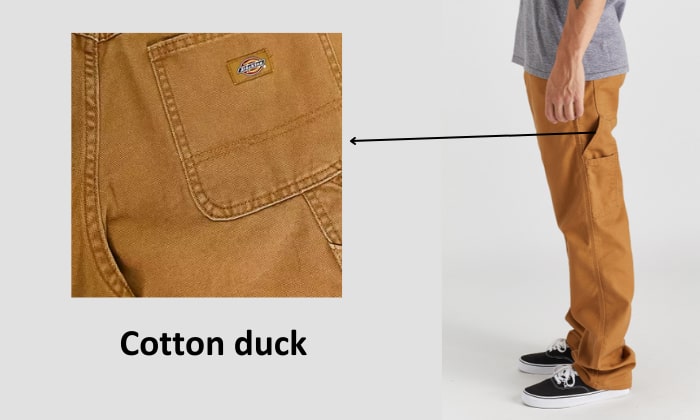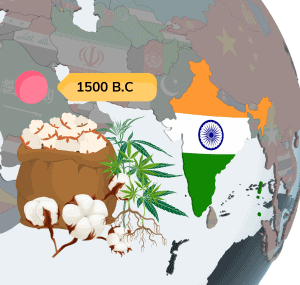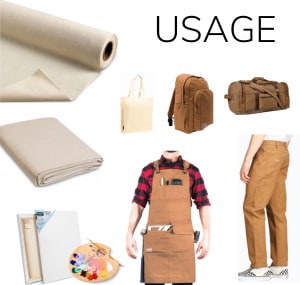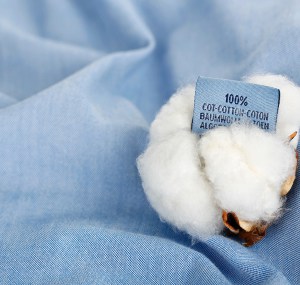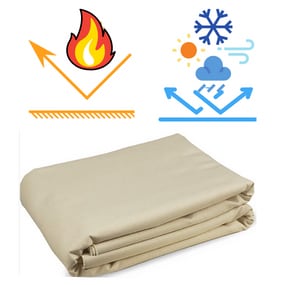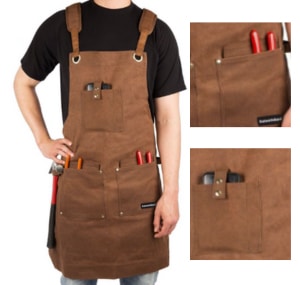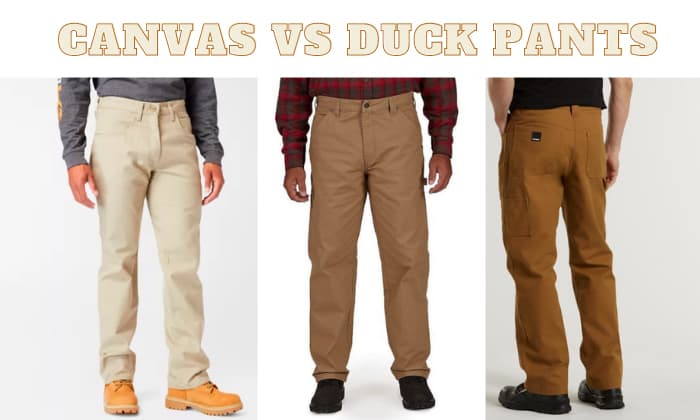You see the term in every product description, and now you wonder, “What are duck canvas work pants?” Is it the same material as the canvas people normally use for painting?
In short, no. If you look closely, the canvas fabric that one normally finds in art supplies shops is not the same “duck canvas” that manufacturers use to make thick work pants. Nevertheless, these two fabrics can be made of cotton.
In short, duck canvas pants differ from normal ones in that they’re more durable and can hold their shapes better, partly due to their more tightly-woven design. Work pants made from this material are tough enough to resist wear and tear.
Table of Contents
What is a Duck Canvas?
The plain canvas and duck material share a common thread: Both are made by weaving two-ply medium or heavy-weight threads using the “plain-weave” method.
Also known as “duck” or “cotton duck,” this fabric is technically not a canvas. After all, the cotton yarns used for making ducks are much finer than the ones on a cotton canvas fabric.
In any case, we think it’s best to understand these semantics by tracing their history.
1. A brief history
The word “canvas” originated from the word “canevas” in 13th-century Old French that came from the Latin word “cannapaceus,” which means made of “cannabis.”
That’s because the original makers of the plain canvas fabrics in India have used cannabis fibers since 1500 B.C. In the 8th century, traders brought cotton to Europe, paving the way for manufacturing cotton canvases.
For centuries, these fabrics have been used for paintings, garments, bags, shoes, tents, sails, curtains, and many more.
Similarly, the “duck” fabrics were used by the Dutch people for sailcloths. Though spelled like the waterbird, the name came from “doek,” the Dutch word for “cloth”—this should give you an idea regarding duck fabric definition.
It was not until the mid-1800s when US-based mills increased the production of these fabrics and began developing duck cloth used for workwear instead of just for tents or ship sails.
Because the duck’s weaves are tauter than normal canvas, it is more tear-resistant. As such, pants made of this material became popular among those who worked under rough conditions, like sailors, miners, and construction workers.
2. Usage
Since then, these fabrics have been rated on a scale of 1 to 12 based on their weight per square yard. As the rating changes, so does the primary usage:
| No | Ounce per square yard | Applications |
| 1 | 30 | Bags, sound absorbers, storage, horse packs, and blankets, as well as coverings for equipment, flooring, or walls |
| 2 | 28 | Tarpaulins production and coverings |
| 3 | 26 | Maritime applications, such as sea bags |
| 4 | 24 | Hammocks, heavy work pants, belting, and sandbags |
| 5 | 23 | Hard-wearing workwear, overalls, or jackets |
| 6 | 21 | Utility bags, belts, and placemats |
| 8 | 18 | Rucksacks, awnings, tents, or tarps |
| 10 | 14.75 | Painter’s canvas or drop cloth, curtains, hammocks, or clothes |
| 12 | 11.5 | Slipcovers, lightweight clothing, painter’s canvas |
Note: Numbers 7, 9, and 11 are no longer used commercially.
3. Common features of duck work pants
- Material
To date, garment companies still use the term “cotton duck pants” even though there is no such thing as polyester duck or hemp duck.
After all, cotton is the only fiber that manufacturers use to make ducks. And as cotton shrinks when exposed to heat, pants made from this material will decrease in size if washed with hot water.
Due to the heavyweight yarns and tight weaves, pants made of this fabric aren’t very breathable, especially in hot weather. In addition, they can feel stiff when new. You will have to break the trousers in.
Because of that, some brands have taken the steps to pre-wash trousers to soften them. Alternatively, they incorporate small quantities of elastane to make them stretchier.
- Weather- and fire-resistant qualities
Thanks to their innate thickness, duck pants can resist wind and cool temperatures. At the same time, manufacturers have also come with designs that include insulation or fire-resistant coatings. One prime example is the work pants from Dickies.
Although it is rare to find waterproof duck pants, you can spray them with a store-bought waterproof coating or apply wax.
- Reinforced construction
It’s not just the duck fabric that makes these pants tough. Designers also strengthen the parts of the pants that are constantly subjected to the impact of intense physical labor and rough working conditions.
Many duck work trousers are reinforced with double knees for the workers whose jobs involve a lot of kneeling. Aside from preventing the fabric from wearing quickly when kneeling on rough surfaces, these features also double as pockets for knee pads.
Plus, it is also not uncommon to see work pants constructed with gusseted crotches to prevent rips when workers bend or climb ladders.
- Storage for tools
Workwear brands also design their pants with hammer loops and reinforced pocket linings for their clip-on measure tapes or flashlights for carpenters or utility workers. Besides that, many cargo pants are made of duck cotton.
- Fitting
Work pants tend to be baggier than other types of trousers primarily due to the workers’ need to move comfortably. That goes for both women’s and men’s duck canvas pants.
Manufacturers are also aware that every body type is unique. Thus, it is not impossible to find duck canvas pants slim designs.
Pros and Cons of Wearing Duck Pants
The previous sections of this article touched on the benefits of duck canvas pants. But like any material, this fabric has its downside, too.
- Garments made of duck cotton are incredibly durable
- Can keep you warm during cool and windy days
- Available in flame-resistant or water-resistant versions
- Too thick for summer
- Takes a while to break in
- Prone to shrinking
How Much Do Duck Pants Cost?
It depends on the brand and the materials used to make the pants. A basic pair of duck pants can cost over $30. Flame-resistant or weatherproof canvas pants are more expensive due to the additional treatment or coating.
For example, a flame-resistant pair of trousers at Carhartt starts at $100.
Some Best Brands on the Market
We know that most of our readers have a bias toward apparel that is made in USA. For that, Dickies, Wrangler, Filson, and Carhartt duck canvas pants remain at the top of our list of recommendations.
That said, keep in mind that all these brands also have pant productions outsourced to other countries.
Canvas Vs Duck Pants
1. Canvas can be made of other fibers besides cotton
In the first place, the ancient canvas was made of hemp. Apart from cotton, the other traditional material is linen, but modern versions are constructed with polyvinyl chloride—a synthetic.
That is why it is not impossible to find linen or hemp canvas pants. As mentioned earlier, ducks are only made of cotton.
2. Ducks tend to be heavier
We pointed out two distinctive features of duck fabrics: First, they are made of heavyweight cotton yarn, and second, their weaves are much tighter than canvas. With this in mind, you can expect that duck pants are heavier than canvas ones of the same size.
3. Weather-proof
Considering that ducks are thicker, they are most suitable for cooler temps. But the question is, “Is canvas pant breathable for summer?”
Yes, it is more appropriate for working in hot conditions! It’s always good to have both canvas and duck pants in your wardrobe so you can put together the right outfit for the right season.
Conclusion
Duck cloth is made of tightly-woven cotton. That is the brief answer to the question, “what are duck canvas work pants?”
Although both duck and plain canvas are constructed with cotton yarns using a similar technique, the former is more tightly woven and heavier.
However, you don’t need to ditch your canvas pants. You can save them for the summer and wear ducks during the cooler seasons.

Veronica is our content editor. She is a talent in delivery. Her main work is editing and writing articles that are both informative and simple to follow. She is in charge of synthesizing our understanding of what personal protection equipment (PPE) is needed in each job, how to best apply it, and how to visualize that equipment.



